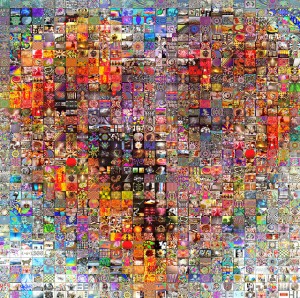Images are important. As far back as human history goes, we have been using images to make sense of the world around us, whether that be with cave paintings, frescos, drawings, or figures on porcelain dishes. With the proliferation of the mass media, we are an increasingly visual culture that associate meaning with images.
The problem with images is that we don’t all see the same messages in images. In the 21st century, a lot of images grab our attention through advertisements but there is always a chance that different audiences will see the ad differently and thus attribute different meanings to it.
The article Practices of Looking: An Introduction to Visual Culture by Marita Sturken and Lisa Cartwright suggest that the different ways of interpreting advertisements might come from social factors such as age, class, gender, and

regional and cultural identity. They give the example of viewers watching M*A*S*H; the show was set during the Korean War but referenced historical events from the 1970s. Therefore, the show would resonate differently with a US soldier who had lived through these events and a viewer in a South American country who didn’t fully understand the show’s context.
The article also presented various theories to point to where we derive meanings from. One of the ones that resonated with me came from the French sociologist, Pierre Bourdieu. Bourdieu’s theory revolves around the idea that we derive meanings from images that reflect our concept of beauty. His theory also suggested that there are institutions such as museums that strive to “not only to educate people about the history of art, but also to instill in them a sense of what is tasteful and what is not” (49). In this sense, we develop our sense of beauty based on the images portrayed by public institutions such as museums and thus develop our biases and interpretations for other images in society such as advertisements.
However, not all images are open to our interpretation. Many images contain context clues to lead the viewer to a certain interpretation. This is known as the process of encoding and decoding; all images are encoded with a certain meaning when it is created and it is up to the viewer to decode these images. Stuart Hall, a cultural-theorist and sociologist, came up with three possible positions viewers can take as decoders:
- Dominant-hegemonic reading – viewers unquestioningly identify with the popular position of an image or text
- Ex: A popular television show
- Negotiated reading – viewers question the dominant meaning of an image or text and assign a new meaning
- Ex: A campaign poster
- Oppositional reading – viewers disagree with the dominant meaning or reject it altogether
- Ex: Artists copying old works but giving it a new modern meaning
These different positions we take on as decoders of the images of the mass media help explain why there are many different perceptions of ads around the world. What do you think? Feel free to share your thoughts below!
